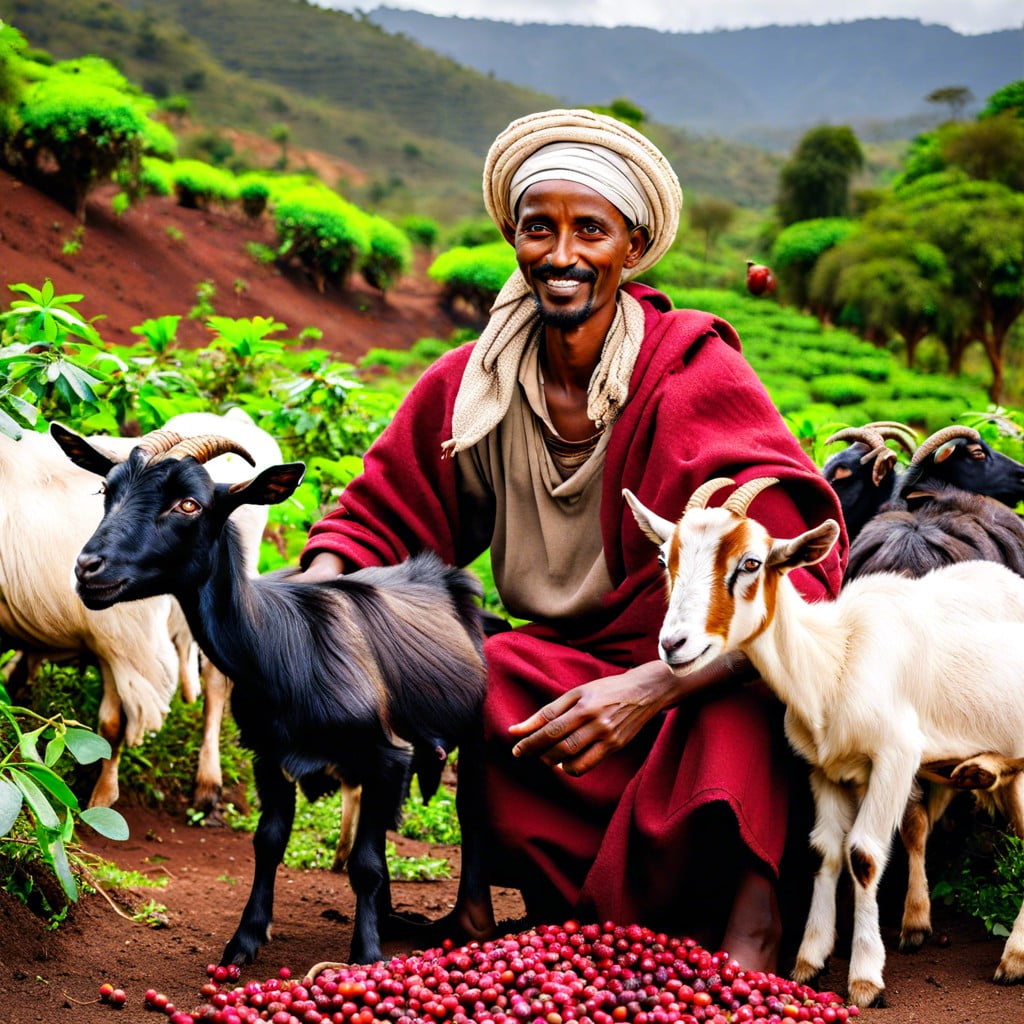Discover the origins of coffee and how it became a global beverage.
An Ethiopian Legend

According to popular lore, coffee’s discovery dates back to the 9th century with a goat herder named Kaldi from Ethiopia. Noticing his goats became unusually lively after eating berries from a certain tree, Kaldi tried them himself. The energizing effect was immediate.
Kaldi reported his findings to a local monastery where monks concocted a drink with the berries that kept them awake during long hours of prayer. Word of this invigorating brew spread quickly, setting the stage for coffee’s global journey.
This tale, while captivating, is steeped more in folklore than documented history, yet it underscores the ancient origins and cultural significance of coffee in Ethiopian society.
Coffee Comes to Europe
By the 17th century, coffee had made its way to Europe and was becoming increasingly popular across the continent. The first coffeehouses opened in Venice in 1645, due to the city’s trade with North Africa and the Middle East, where coffee had already established its presence. These coffeehouses, often called “penny universities,” became social hubs where people from various backgrounds gathered to discuss politics, philosophy, and business over a cup of coffee.
Despite initial skepticism and even bans due to fears of its “exotic” origin and potential influence, coffee’s popularity continued to grow. Clerics in Venice petitioned to have coffee banned, considering it the bitter invention of Satan. However, Pope Clement VIII, after tasting coffee, declared it so delicious that it would be a sin to let only infidels enjoy it. He even blessed it, paving the way for Christian acceptance.
This beverage soon spread to other major European cities such as London, Paris, and Vienna, fundamentally altering social and cultural dynamics. The proliferation of coffeehouses across Europe played a crucial role in the Age of Enlightenment, providing a fertile ground for intellectuals to share ideas—an impact that has shaped modern intellectual thought.
The New World
As coffee made its way across the Atlantic in the mid-17th century, its reception varied greatly between different cultures and communities. Initially, coffee was seen in North America as a novelty. It first appeared in the colony of New Amsterdam, later renamed New York by the British.
The popularity of coffee in North America gained significant momentum after the Boston Tea Party of 1773. As tea became synonymous with British oppression, coffee quickly became a patriot’s drink. American revolutionaries adopted it as a substitute to demonstrate their resistance against British rule.
Coffeehouses soon sprang up in cities like Philadelphia and New York, becoming centers of social activity, political debate, and commerce. These establishments played a significant role in shaping the democratic society of the emerging American state. This period marked the beginning of coffee’s deep integration into American culture.
Plantations Around the World
As coffee’s popularity soared, its cultivation spread globally to accommodate demand. By the 17th century, European colonies in the East Indies and Latin America started large-scale production. Each region’s unique climate contributed distinct flavors to their coffee, enhancing the beverage’s global appeal.
Brazil emerged as a major player in the 18th century, using innovative cultivation techniques that boosted its exports significantly. Soon, it became the world’s largest coffee producer, a title it still holds today.
Other countries followed suit, with Vietnam, Colombia, and Ethiopia becoming key exporters. These nations adapted their agricultural practices to optimize yield and quality, impacting both local economies and global markets.
Today, these plantations not just influence coffee trends but also foster socioeconomic development within their communities.
History of Coffee
As coffee spread globally, its cultivation and consumption patterns shifted significantly with each new environment it touched. Initially exclusive to the Arabian Peninsula where it was cherished for its invigorating properties, coffee found its way into Europe in the 17th century, becoming a staple in literary and intellectual circles.
In Venice and later in cafes across Paris and London, coffee developed into a social drink, integral to business meetings and intellectual debates. These gatherings in coffee houses often sparked conversations that fueled the Age of Enlightenment.
By the 18th century, the demand for coffee had grown exponentially, leading to its cultivation in colonies in the Caribbean, South America, and Asia. The shift not only made coffee more accessible to the masses but also entrenched it deeply in global trade dynamics.
Interestingly, each region where coffee thrived added its twist to both the cultivation practices and ways to enjoy the brew. This localized innovation played a crucial role in shaping the diverse coffee culture we celebrate today.